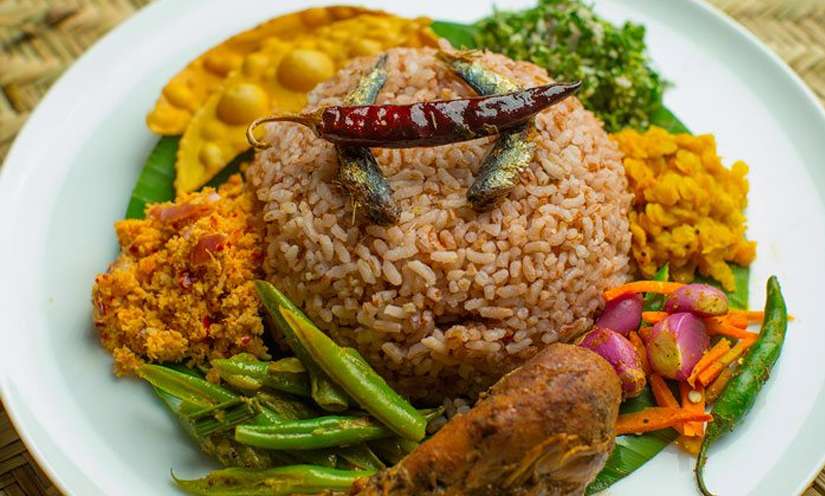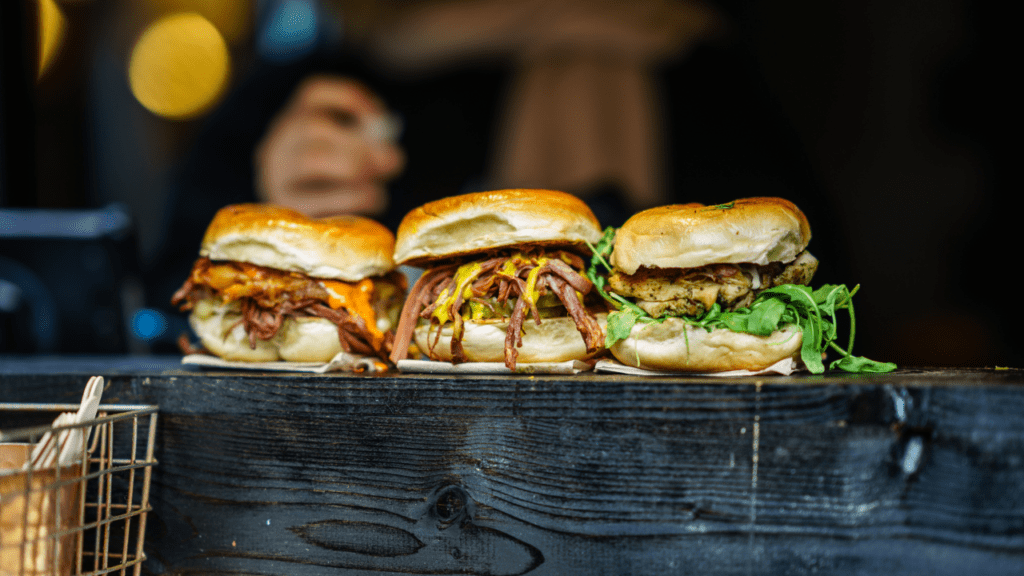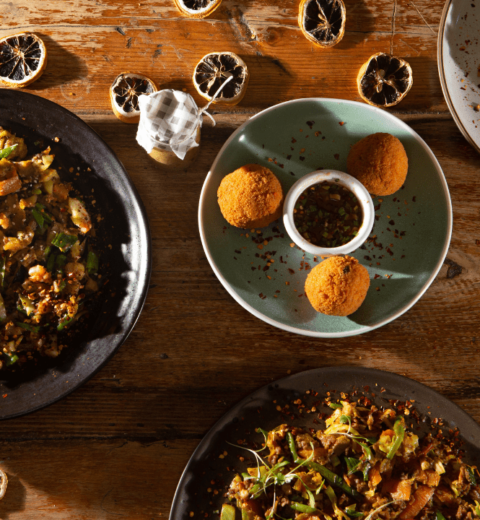When it comes to culinary treasures, Sri Lanka is a hidden gem waiting to be discovered. This tear-shaped island in the Indian Ocean boasts a vibrant and diverse culinary heritage that’s as rich as its history and as varied as its landscapes. Join me on a mouthwatering journey through the enchanting world of Sri Lankan cuisine, where spices dance, flavors sing, and traditions whisper secrets of centuries past.
Unveiling the Culinary Tapestry of Sri Lanka
A Symphony of Spices
Imagine a land where spices are the heart and soul of every dish. In Sri Lanka, spices are not mere flavor enhancers; they are the stars of the show. From fiery red chili to fragrant cardamom, the array of spices used in Sri Lankan cooking is simply mind-boggling. It’s a place where spice markets are an assault on your senses, and every meal is an aromatic adventure.
Did you know?
Sri Lanka is renowned for its production of cinnamon, which is considered some of the finest in the world.
Rice and Curry: The Heart of Sri Lankan Cuisine

If there’s one dish that epitomizes Sri Lankan food, it’s “rice and curry.” But don’t be fooled by the simplicity of the name. This is no ordinary curry. It’s a vibrant medley of flavors and textures, featuring rice as the canvas upon which a dazzling array of curries, sambols, and chutneys are painted.
The curries can be made with a variety of ingredients, such as chicken, fish, beef, or even jackfruit for the vegetarians. Each curry has its unique blend of spices, and the result is a symphony of tastes that will leave your taste buds singing.
Hungry for more?
Ask anyone in Sri Lanka, and they’ll tell you that the best rice and curry is always found in the local homes rather than the restaurants.
The Influences That Shaped Sri Lankan Cuisine
A Melting Pot of Cultures
Sri Lankan cuisine is a testament to the island’s rich history of trade and colonization. The flavors you encounter here have been influenced by a tapestry of cultures, including Indian, Dutch, Portuguese, and British. Each culture left its mark on the food, resulting in a unique fusion of tastes that is unmistakably Sri Lankan.
Fun Fact:
The Dutch introduced “Lamprais,” a dish consisting of rice, meat, and vegetables wrapped in a banana leaf, which is still enjoyed by Sri Lankans today.
Street Food Extravaganza

No culinary journey through Sri Lanka is complete without a visit to its bustling street food stalls. Whether you’re wandering through Colombo’s chaotic streets or exploring the coastal town of Galle, you’ll find an array of street food delights that will tantalize your taste buds.
From crispy egg hoppers (a type of pancake) to spicy kottu roti (chopped roti stir-fried with vegetables and meat), these street snacks are a delicious and affordable way to sample the essence of Sri Lankan cuisine.
The Art of Balancing Flavors
Sweet, Sour, Spicy, and Salty
Sri Lankan cuisine is all about balance. The flavors are carefully orchestrated to create a harmonious blend of sweet, sour, spicy, and salty. Take the iconic dish, “Pol Sambol,” for example. It’s a fiery concoction of grated coconut, red chili, lime juice, and salt, providing the perfect contrast to milder curries and rice.
The delicate art of balancing flavors is what sets Sri Lankan cuisine apart and keeps you coming back for more.
Food for thought:
Just like in Sri Lankan cuisine, balance is key in life too. Sometimes, the perfect harmony lies in embracing contrasts.
Restaurants in Sri Lanka: A Culinary Odyssey
Colombo’s Culinary Scene
If you’re looking for a culinary adventure that combines the traditional with the contemporary, Colombo is the place to be. The capital city is a melting pot of culinary influences, and you’ll find everything from humble street food stalls to upscale dining establishments.
For a taste of history and luxury, visit the Galle Face Hotel, where you can savor a delicious spread of Sri Lankan and international dishes while enjoying breathtaking views of the Indian Ocean.
Coastal Dining
Sri Lanka’s coastline offers a seafood lover’s paradise. Coastal towns like Negombo and Mirissa are dotted with seafood restaurants that serve the freshest catch of the day. Feast on succulent prawns, spicy crab curry, and grilled fish while listening to the soothing sounds of the waves.
Pro Tip:
Try the “Devilled Prawns” – a spicy and tangy prawn dish that will awaken your taste buds.
Hill Country Retreats
As you journey into Sri Lanka’s lush hill country, you’ll discover charming restaurants nestled amidst tea plantations and mist-covered mountains. Enjoy a cup of world-famous Ceylon tea and indulge in homemade cakes and pastries at tea estate restaurants.
Conclusion: A Taste of Paradise
Sri Lankan cuisine is a reflection of the island’s vibrant culture, history, and natural beauty. It’s a culinary adventure that will take you from bustling markets to tranquil tea plantations, from fiery spices to soothing coconut sambols. Whether you’re savoring street food by the sea or dining in a colonial-era hotel, every bite is a journey through time and flavor.
So, the next time you find yourself in Sri Lanka, don’t just visit the landmarks; embark on a gastronomic journey that will leave you with a deeper appreciation of this enchanting island.
—
FAQs About Sri Lankan Cuisine
1. What are some must-try Sri Lankan dishes?
Sri Lanka offers a plethora of delicious dishes, but some must-try options include “rice and curry,” “hoppers,” “kottu roti,” “Pol Sambol,” and “devilled prawns.”
2. How spicy is Sri Lankan food?
Sri Lankan food can be quite spicy, but the level of spiciness can vary. You can always ask for milder versions of dishes if you’re not a fan of too much heat.
3. Are there vegetarian options in Sri Lankan cuisine?
Yes, Sri Lankan cuisine offers plenty of vegetarian options. Dishes like “jackfruit curry,” “dhal curry,” and various vegetable curries are popular choices for vegetarians.
4. Where can I find the best street food in Sri Lanka?
You can find delicious street food throughout Sri Lanka, but some of the best spots are in Colombo, Galle, and Kandy. Don’t forget to try the egg hoppers and kottu roti!
5. What’s the significance of tea in Sri Lankan culture?
Tea plays a significant role in Sri Lankan culture and economy. Sri Lanka is known for its Ceylon tea, and you can visit tea plantations in the hill country to learn about the tea-making process and enjoy a cup of freshly brewed tea.



